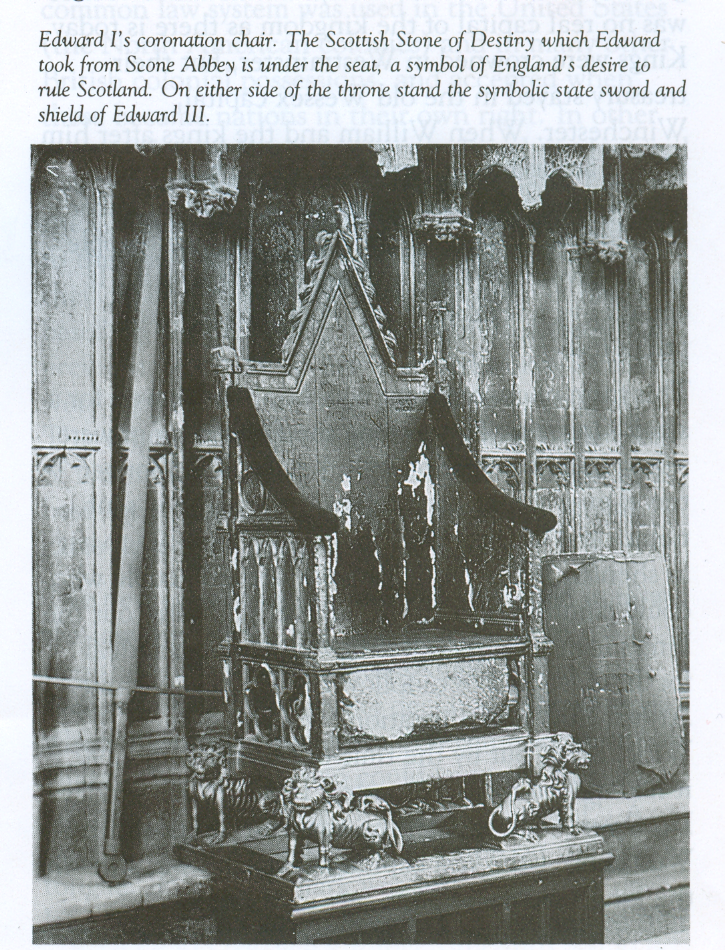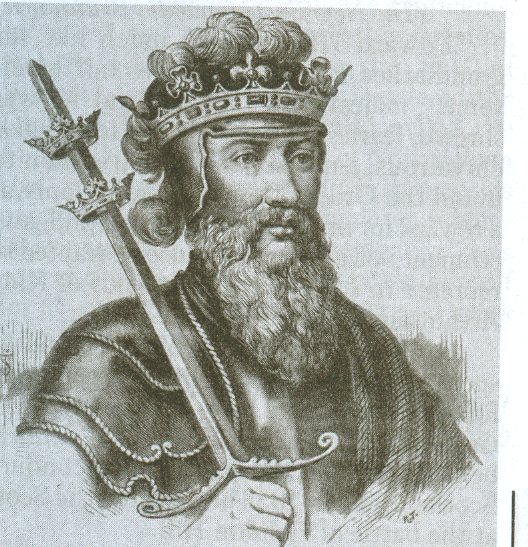
Task 1. Answer the questions.
When did the conquest of Wales take place?
What did the Welsh usually do when their country was invaded?
How did they harass the invaders?
To whom had the great parts of the country been given? Why?
When did matters come to a head?
Who succeeded in conquering Wales? How did he do it?
When did Edward unite west Wales with England?
Why did the Welsh need a new prince?
Who became Prince of Wales?
From what time has the eldest son of the ruling king been made Prince of Wales?
Do you know the name of the present Prince of Wales?

Dealing with Scotland - in 1290 a crisis took place over the succession to the Scottish throne. There were 13 heirs. John de Balliol and Robert Bruce – both Norman – Scottish knights - were among them. In order to avoid civil war the Scottish nobles invited Edward 1 to settle the matter. Edward 1 told both men that they must do homage to him, and so accept his overlordship, before he would help settle the question. He then invaded Scotland and put John de Balliol on the Scottish throne. Edward 1 had always shown interest in joining Scotland to his kingdom. First, he made John de Balliol provide money and troops for the English army, then he captured all the main Scottish castles, then Edward 1 stole the sacred Stone of Destiny from Scone Abbey on which, so the legend said, all Scottish kings must sit. He believed that without the scone, any Scottish coronation would be meaningless, and that his own possession of the Stone would persuade the Scots to accept him as king. But the Scottish kings managed perfectly well without it.
His treatment of the Scots created a popular resistance movement*
* at first the resistance was led by William Wallace, a Norman – Scottish knight. Edward captured Wallace and executed him , putting his head on a pole on London Bridge. Scottish nationalism was born on the day Wallace died.
* a new leader took up the struggle – Robert Bruce. Edward marched against Robert Bruce, but he died on the way. On Edward’s grave were written the words “Edward, the Hammer of the Scots’. He had intended to hammer them into the ground and destroy them, but in fact he had hammered them into a nation. After his death his son Edward 2, turned back to England. Robert Bruce had already made himself the king of Scots. Bruce destroyed Edward’s army. Six years later the Scots wrote to the Pope in Rome: “for as long as even 100 of us remain alive, we will never consent to subject ourselves to the dominion of the English”.
Task 1. Answer the questions.
How did Edward 1 put John de Balliol on the Scottish throne?
Why were De Balliol’s 4 years as king unhappy?
What did Edward steal during his invasion? Why did he do it?
What lead to the creation of a resistance movement in Scotland?
Who was the leader of “people’s army”?
What happened to William Wallace?
What was born on the day Wallace died?
Who took up the struggle?
Did Robert Bruce defeat the English army in Scotland?
What is written on Edward’s grave?
Edward 2. Edward I was a very strong ruler, who lead endless wars of conquest. He was succeeded by his son Edward II. Born at Caernarvon, Wales, he was created the first Prince of Wales by his father Edward 1. He acceded to the throne in 1307 and showed himself an incompetent and weak ruler. His attempt to suppress the Scots in 1314 resulted in the defeat at Bannockburn. Incompetent and frivolous, he gave all his attention to his numerous favourites who were disliked and despised. In the end he was deposed by his wife Isabella and her lover Roger Mortimer in 1327 and died the same year, probably murdered. But there was no question of any successor other than his son Edward III.
E dward
3. The
young king took after his grandfather. He was wise, courageous and
ruthless.
dward
3. The
young king took after his grandfather. He was wise, courageous and
ruthless.
The Hundred Years’ War. The repeated attempts of English kings to control Scotland had led the Scots to look for allies. After Edward 1’s attempt to take over Scotland , the Scots turned to the obvious ally, the king of France. This “Auld Alliance” lasted into the 16th century. The countries didn’t operate for a long time - it was not needed .
England’s troubles with France resulted from the French king’s growing authority in France, and his determination to control all his nobles. The two most troublesome nobles were the duke of Burgundy and the English king (who was still the king of France’s vassal as duke of Aquitaine, both of whom refused to recognize the French king’s overlordship.
To make his position stronger, the king of France began to interfere with England’s trade:
the French king seized part of Aquitaine -
an area called Gascony, traded its fine wines for England’s corn and woolen cloth. This trade was worth a lot of money to the English Crown. Burgundy was England’s other major trading partner – through Burgundy’s province of Flanders (now Belgium) all England’s wool exports were made.
Any French move to control these two areas was a direct threat to England’s wealth. The king of France tried to make the duke of Burgundy accept his authority. To prevent this, England threatened Burgundy with economic collapse by stopping Burgundy to make an alliance with England against France. The treat to England’s trade and wealth persuaded the rich merchant classes of England that war against France was necessary.
Through his mother Isabella, the only surviving child of the French king Philip IV, Edward 3 had a claim to the throne of France. At the same time, as a duke of Aquitaine, Edward III was still the king of France's vassal. Such a situation was unbearable for young Edward III. So in 1337 he declared war on France. He claimed the right to the French Crown. The war Edward began, later called the Hundred Years' War, did not finally end until 1453, with the English Crown losing all its possessions in France except for Calais, a northern French port.
At first the English were far more successful than the French on the battlefield. The English army was experienced through its wars in Wales and in Scotland. It had learnt the value of being lightly armed, and rapid in movement. Its most important weapon was the Welsh longbow. It was very effective on the battlefield because of its quick rate of fire. Moreover, such arrows could go through most armour. The value of the longbow was proved in two victories, at Crecy in 1346 and at Poitiers in 1356, where the French king himself was taken prisoner. The English captured a huge quantity of treasure, and it was said that after the battle of Poitiers every woman in England had a French bracelet on her arm. The French king bought his freedom for L500,000, n enormous amount of money in those days.
By the treaty, in 1360, Edward III was happy to give up his claim to the French throne because he had re-established control over areas previously held by the English Crown. The French recognised his ownership of all Aquitaine, including Gascony; parts of Normandy and Brittany, and the newly captured port of Calais.
But because the French king had only unwillingly accepted this situation the war did not end, and fighting soon began again. Most of this land, except for the port of Calais, was taken back by French forces during the next fifteen years. It was a warning that winning battles was much easier than winning wars.
